Work Hours
Monday to Friday: 7AM - 7PM
Weekend: 10AM - 5PM
Types of Scaffolding used in Construction
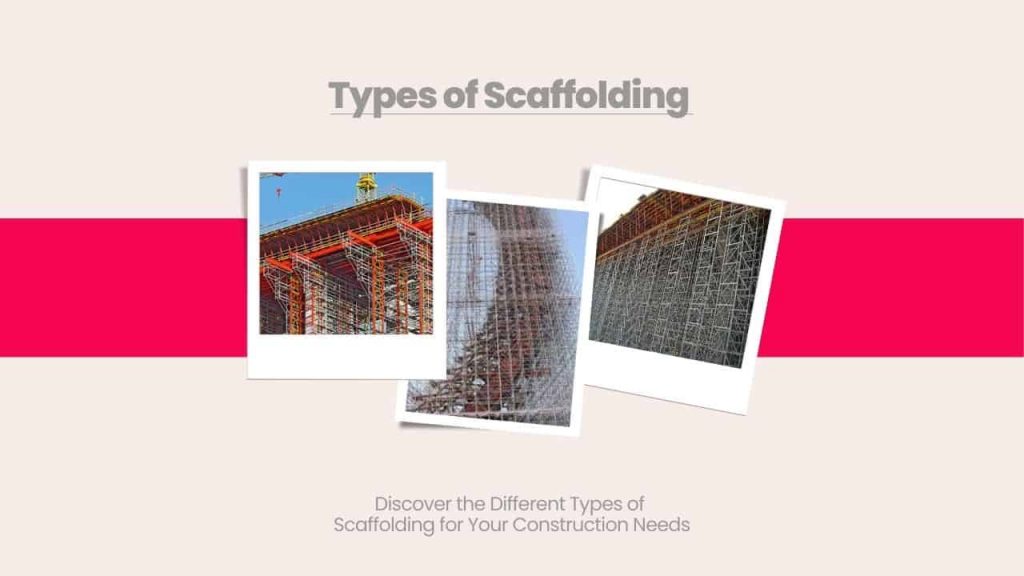
Scaffolding is an essential tool in the construction industry that provides support to workers and materials during the construction, maintenance, and repair of buildings, bridges, and other structures. Different types of scaffolding are used based on the requirements of the job and the structure being worked on. Each type of scaffolding has its own advantages and disadvantages, and it is important to choose the right type of scaffolding for the job to ensure safety and efficiency. In this blog, we will discuss the different types of scaffolding and their advantages to help you make an informed decision when choosing scaffolding for your next project.
What is Scaffolding?
Scaffolding provides a temporary structure for workers to perform tasks at heights that could be challenging or dangerous to reach. The structure is typically constructed with metal pipes or tubes, with wooden planks or metal grating used as the working platform. Scaffolding can be quickly assembled and disassembled and is engineered to be stable and secure, even on uneven or sloping surfaces.
People use scaffolding for a wide range of tasks such as painting, plastering, bricklaying, and installing electrical and mechanical equipment. It is also commonly used for maintaining and repairing buildings, as well as constructing large-scale infrastructure projects like bridges and dams.
Ensuring safety is of utmost importance when it comes to scaffolding, as working at heights can be highly perilous if proper precautions are not taken. The scaffolding structures must be designed and erected by certified professionals, and workers should receive adequate training on using scaffolding equipment and following safety procedures. Regular inspections and maintenance are also imperative to guarantee that the scaffolding structures remain secure and stable throughout their usage.
Advantages of Scaffolding
- Safety: Scaffolding provides a safe working platform for workers to perform tasks at heights, which is its most significant advantage. Working at height can be hazardous, and scaffolding structures are designed to be stable and secure, even on uneven or sloping surfaces. Moreover, scaffolding can be customized to meet the specific needs of each construction project, ensuring that workers can perform tasks safely and efficiently. Safety remains a top priority in the construction industry, and scaffolding plays a crucial role in providing a safe working environment for workers.
- Increased Efficiency: Scaffolding increases efficiency and productivity on construction sites by providing workers with quick and easy access to heights. With a stable platform to work from, workers can perform tasks more accurately and quickly, ultimately speeding up the construction process.
- Improved Access: One of the key advantages of scaffolding is its ability to provide easy and safe access to hard-to-reach areas. Workers can easily reach high ceilings, walls, or other inaccessible areas, allowing them to perform their tasks with ease. This is especially important in construction projects that involve intricate designs or details, where precise work is required. Scaffolding can be customized to fit the specific needs of each project, making it an ideal solution for improving access and maximizing efficiency.
- Flexibility: Scaffolding provides a flexible solution that can be tailored to meet the specific needs of each construction project. There are various types of scaffolding available, and each has its own advantages and disadvantages based on the particular application.
- Durability: Scaffolding is a durable and long-lasting solution that is typically made of high-quality materials like metal and wood. This means that it can withstand heavy loads and adverse weather conditions and can be used for multiple projects over a long period, thus saving costs in the long run. Its robust construction ensures that it can withstand wear and tear, making it a reliable and cost-effective solution for construction projects.
- Improved Site Management: Scaffolding can help to improve site management by providing a clear and organized workspace. This can help to reduce the risk of accidents and improve overall productivity.
Types of Scaffolding
There are several different types of scaffolding, each with its advantages and disadvantages depending on the specific application. The most common types of scaffolding include:
Tube & Clamp Scaffolding
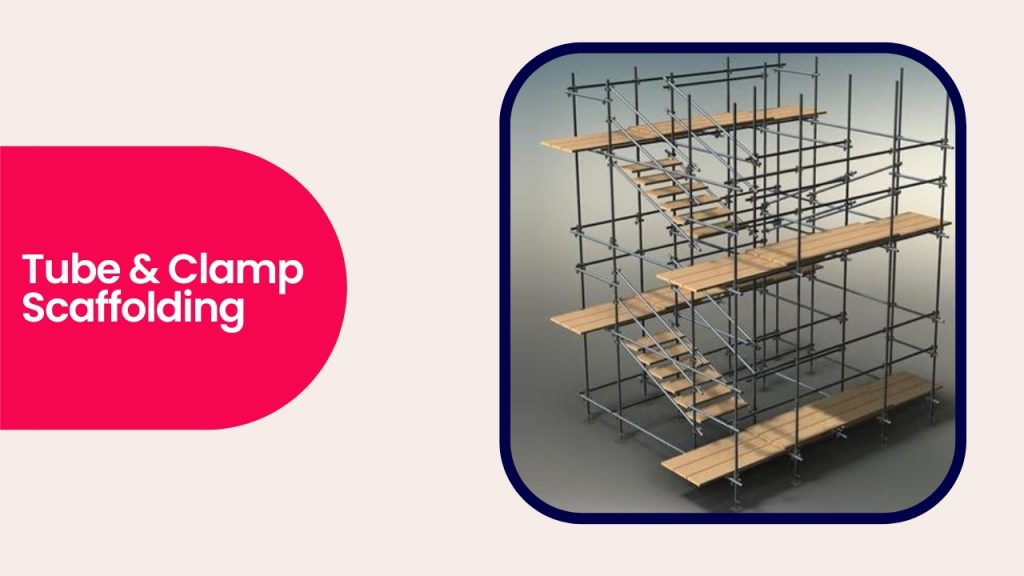
Tube and Clamp Scaffolding is a popular type of scaffolding used in the construction industry. In this type of scaffolding, metal tubes are connected with clamps to form a sturdy framework. This framework is then covered with planks to create a stable working platform. The tube and clamp scaffolding system is versatile and can be easily customized to fit the specific needs of different construction projects. It is also known for its durability, making it a cost-effective choice for contractors.
Frame Scaffolding
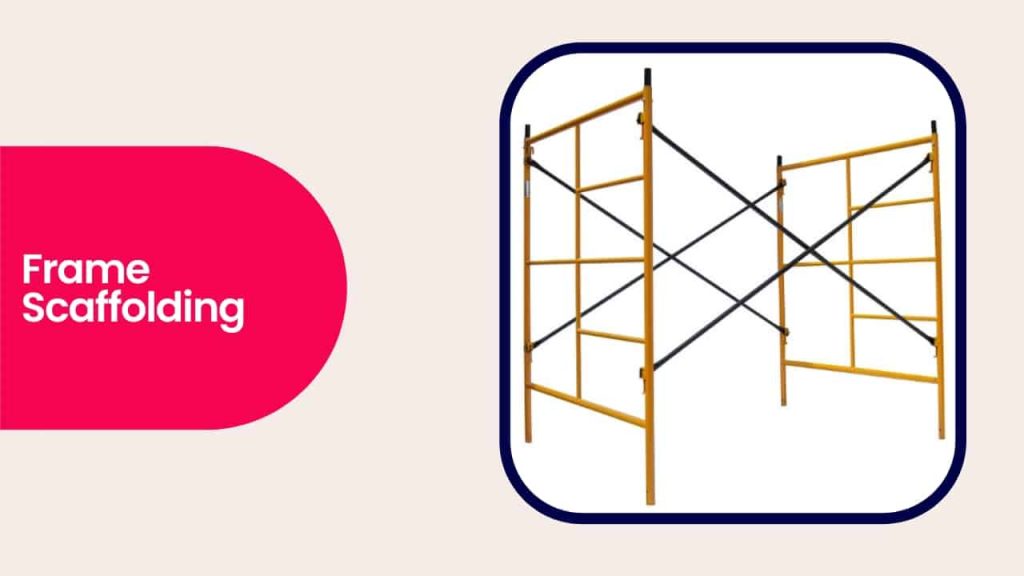
Frame scaffolding is a type of scaffolding that is similar to tube and clamp scaffolding. However, it uses prefabricated frames instead of individual tubes and clamps to form the framework. This makes it quicker and easier to erect and dismantle than tube and clamp scaffolding, although it is generally less versatile in terms of customization.
System Scaffolding
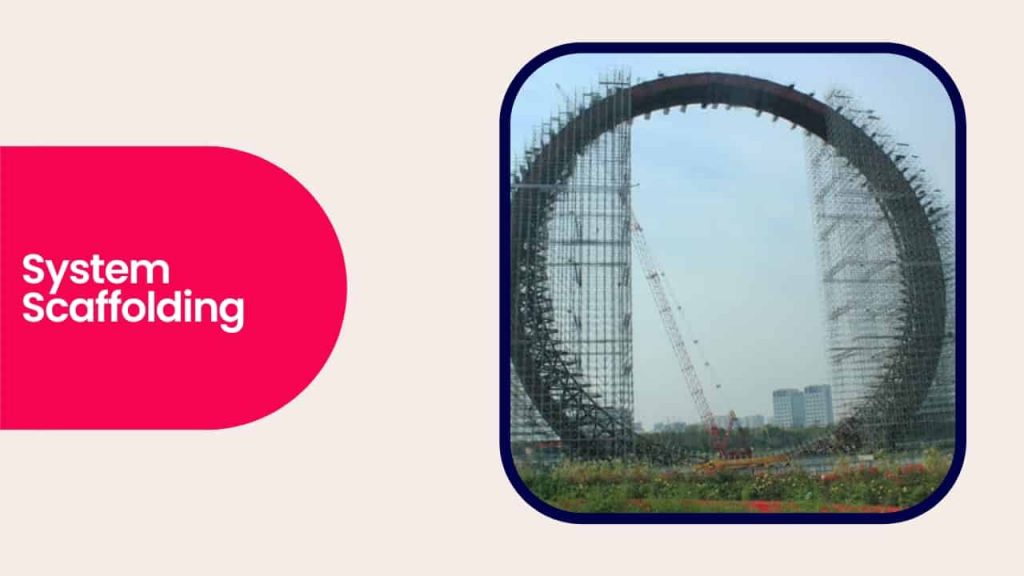
In system scaffolding, the components are prefabricated to allow for easy assembly and disassembly, providing a modular structure that can adapt to different shapes and sizes. It is a suitable option in cases where traditional scaffolding is not feasible, such as in cramped spaces or buildings with irregular shapes.
Suspended Scaffolding
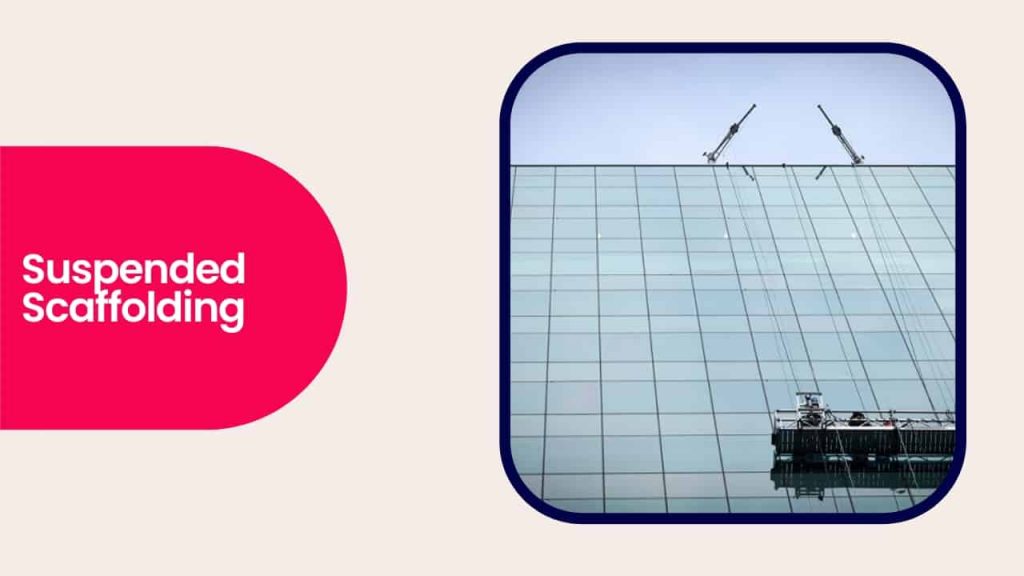
Suspended scaffolding is a type of scaffolding that is utilized to provide access to the sides of tall buildings or other vertical structures. It involves suspending a platform from the top of the building using ropes or cables, which enables workers to perform tasks at heights that would otherwise be impossible to reach.
Conclusion
In conclusion, understanding the different types of scaffolding available and their respective advantages is crucial in ensuring that construction projects are completed safely, efficiently, and cost-effectively. Whether it’s tube and clamp scaffolding for standard construction, frame scaffolding for quick installation, system scaffolding for unique structures, or suspended scaffolding for vertical access, each type has its advantages and can be tailored to meet specific project requirements. By selecting the right type of scaffolding for each project and following proper safety procedures, construction companies can achieve improved site management, increased productivity, and a safer work environment for their workers.
Try Onsite, #1 Tool For Site Tracking




